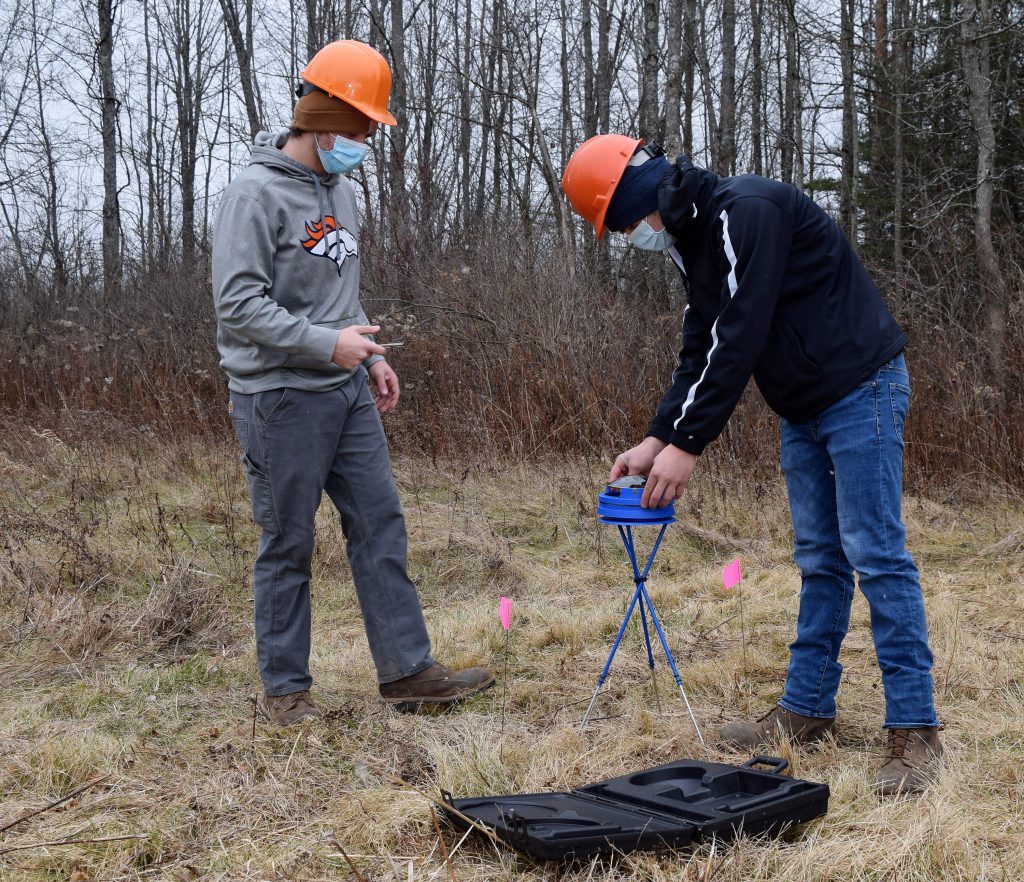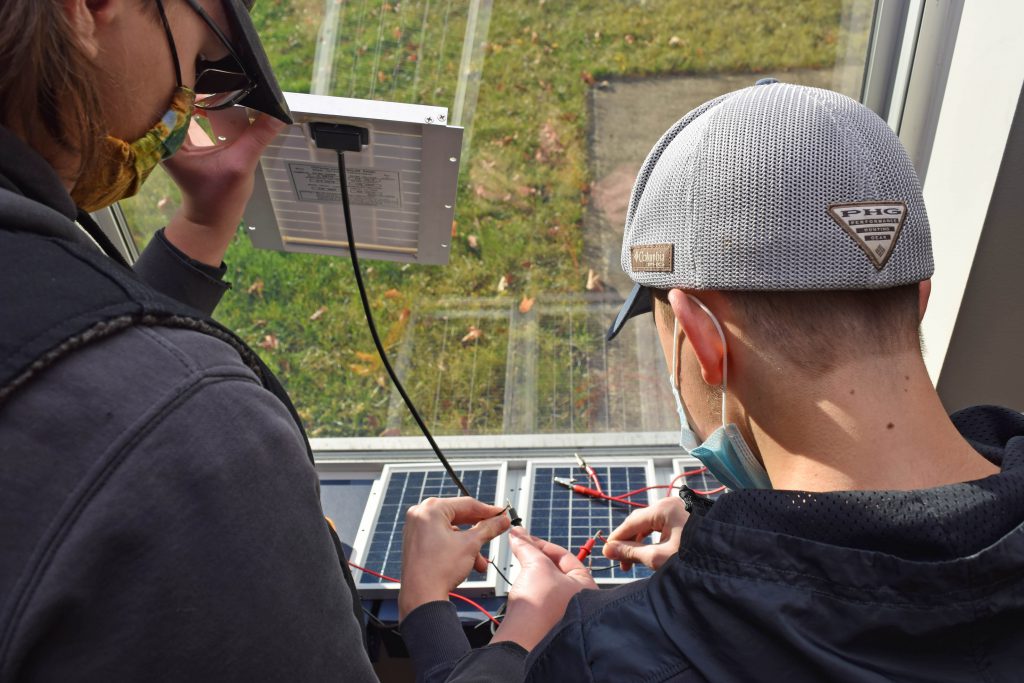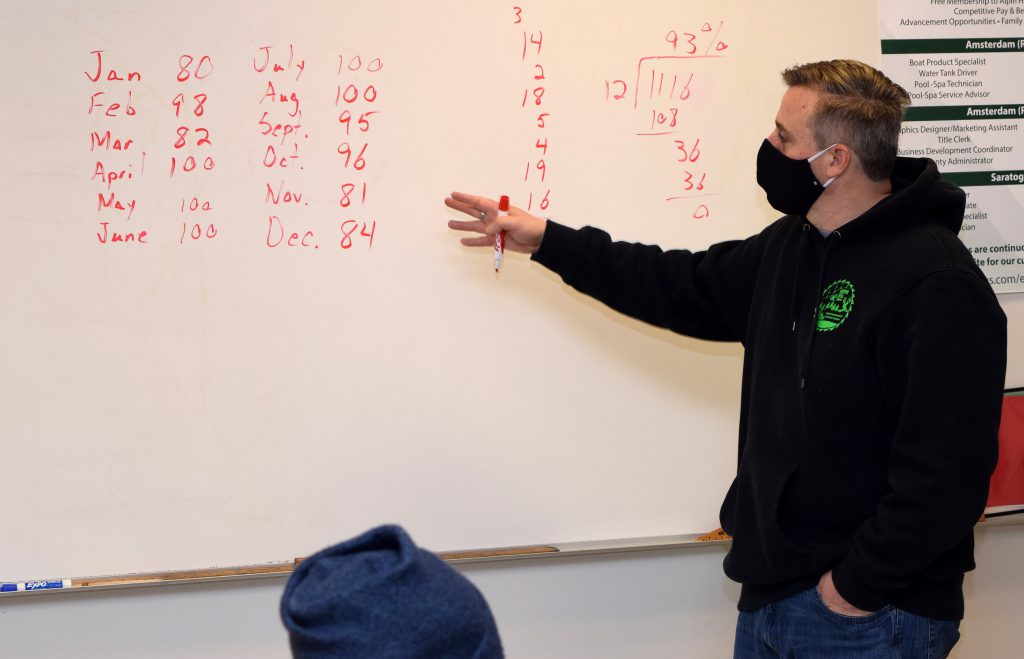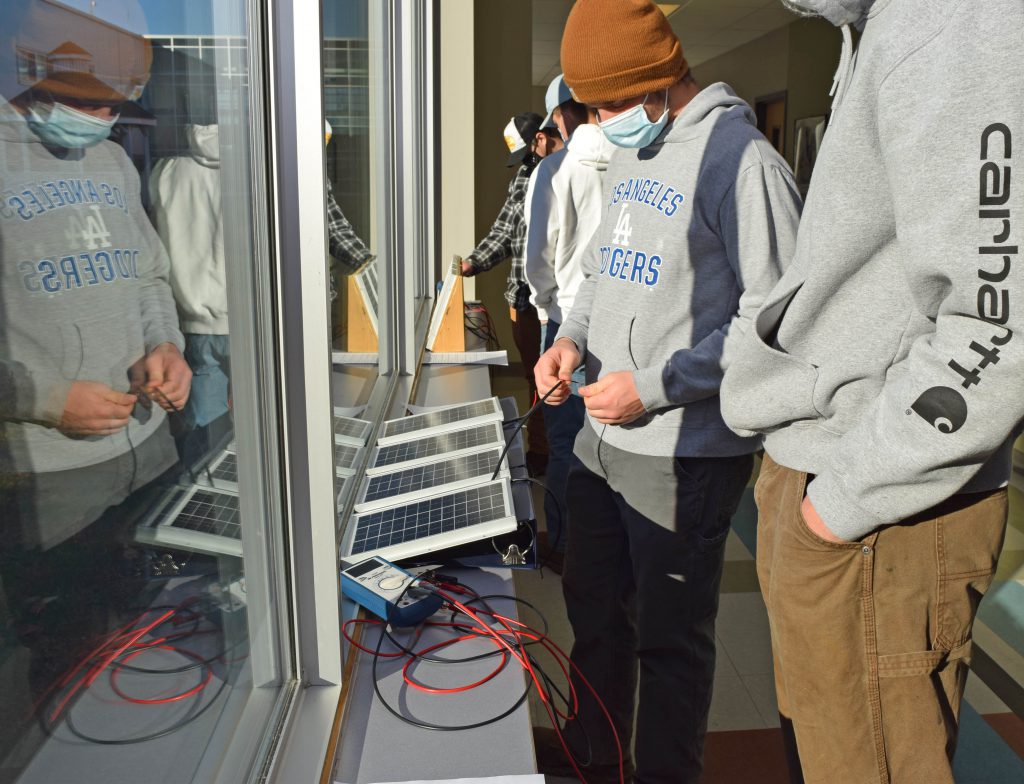With 16 programs available, the HFM Career and Technical Center offers many choices for local high school students interested in exploring possible career paths. Beyond

Environmental Conservation juniors use a Solar Path Finder to to plot the sun’s path and identify areas shaded by obstructions such as trees and buildings.
career and technical skills, however, the center also offers students hands-on opportunities to earn credits required for high school graduation ranging from applied mathematics and algebra to economics and science.
“Instructors for academic subjects such as math and English are integrated into our programs at HFM, and they work with students helping them earn credit and master academic skills in the hands-on way career and technical education is known for,” CTE Principal Michael DiMezza said.
Juniors in the Environmental Conservation program, for instance, recently gained some practical math experience while also learning how to site and wire solar arrays.
Working with HFM Math Instructor Ryan England and EnCon Instructor Craig Newkirk, students learned that before solar panels can be installed and wired on a job site, installers must first find the best location for the panels. To be the most effective – and to be eligible for tax credits – solar projects must be located where there is an average 80 percent daily sun exposure. Using a device called a Solar Path Finder, students were able to plot the sun’s path across the sky and identify areas shaded by obstructions such as trees and buildings. Students then were able to calculate and forecast the total annual percentage of sun exposure for a particular location.
Later in the project, EnCon students again employed math skills while learning to properly wire solar arrays. Analyzing data sheets from solar panel manufacturers, they learned how to estimate the voltage of a solar installation in order to meet residential building codes. Hands-on projects such as these will earn the EnCon student an applied mathematics credit that will count toward the completion of their high school diploma.
Besides math, students in other CTE programs can also earn high school credits in algebra, English, economics, Participation in Government (PIG), science and anatomy & physiology. In addition, all credits earned at CTE are counted towards a student’s high school diploma.
“Statewide the vast majority of career and technical students stay on track and graduate on time, and they do so at a rate far higher than the state average,” DiMezza said, noting the high school graduation rate for HFM seniors last year was 99 percent.
To learn more about HFM programs visit www.hfmboces.org/cte.

Environmental Conservation juniors learn to wire solar arrays.

HFM Math Instructor Ryan England shows students how to calculate the total annual percentage of sun exposure for a particular location.



